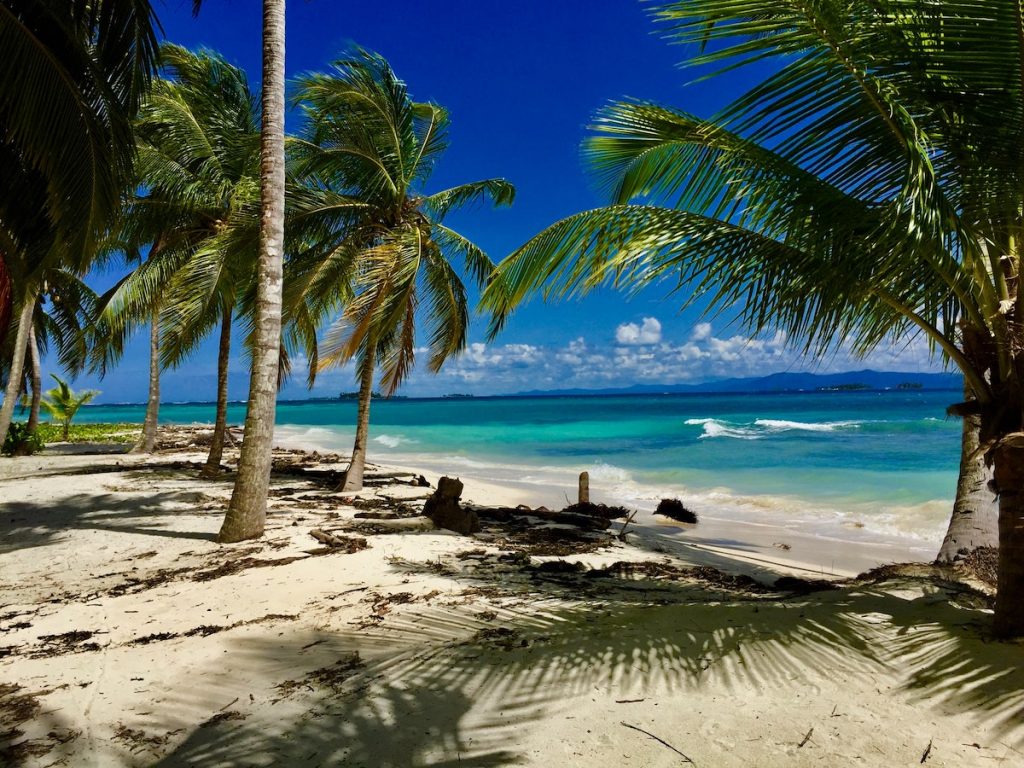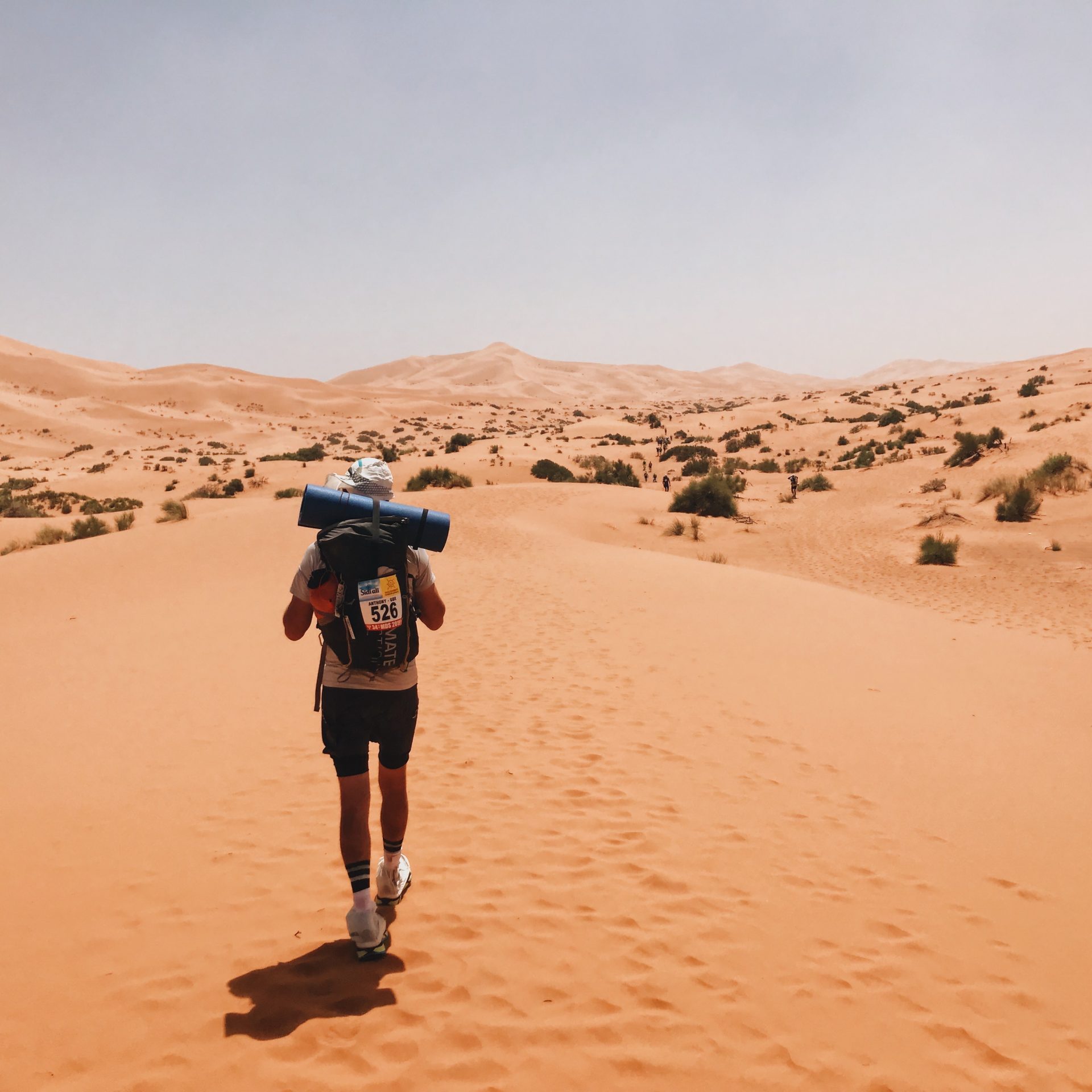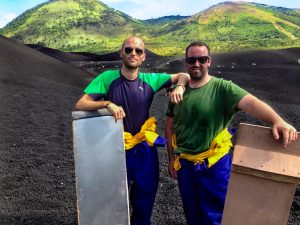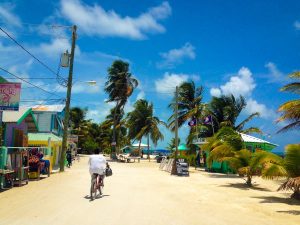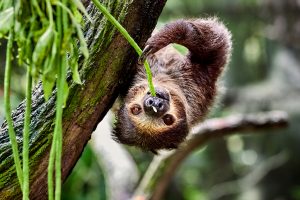I had trouble finding an accurate San Blas Islands travel guide when I first heard about this place while feeling a little underwhelmed by Panama City.
Most of the secret is out now, but if you think that will result in the place being ruined by large resorts and turning into the Sihanoukville party destination of Panama then you are completely mistaken.
San Blas is very well-protected and this preserved status added to its allure as sometimes I just want to switch off from digital media and recharge my batteries for a bit before moving on.
In this post, I’ll break down the ultimate San Blas Island experience, including the unique history, how to get there, what to expect from such a place and how to enjoy your stay, should you ever have the pleasure of staying.
What is All The Fuss About The San Blas Islands?
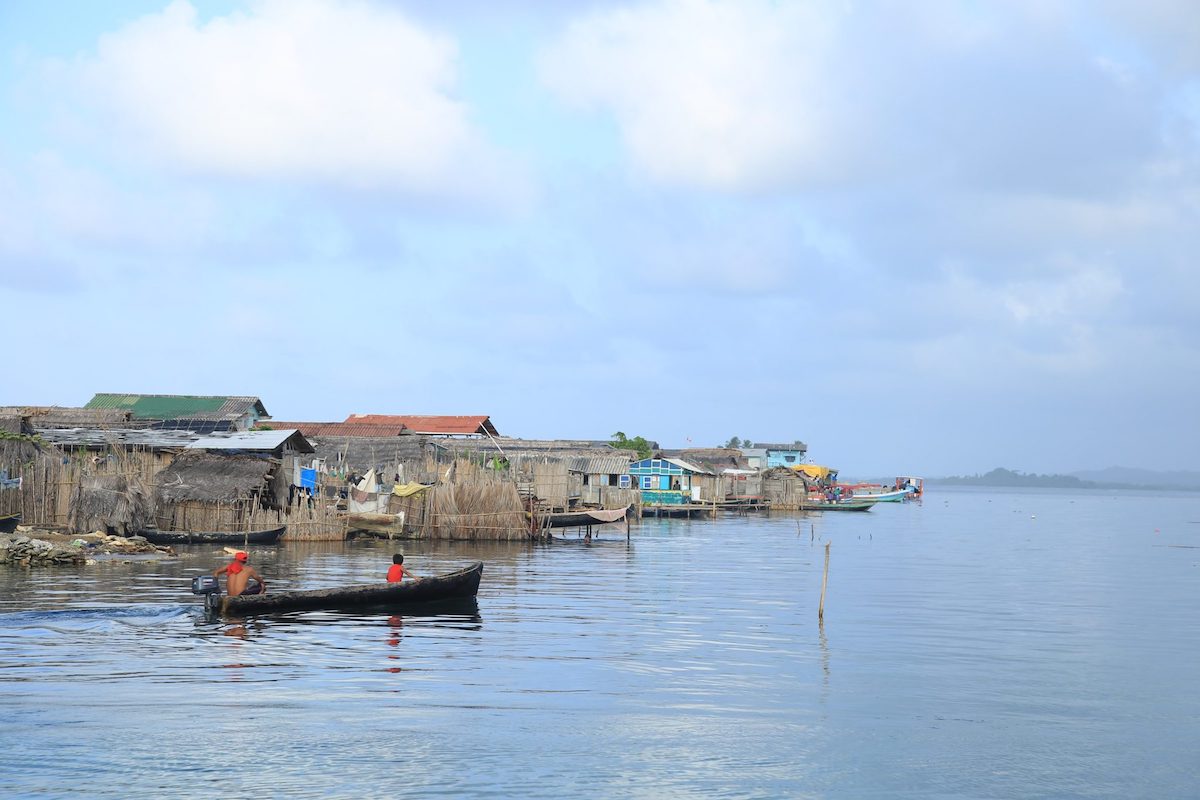
Lying on the north coast of Panama, the self-autonomous San Blas archipelago is made up of over 300 islands and cays. Known as “Guna Yala” to its natives, it is home to the indigenous Kuna Indians, who live independently and autonomously, free from Panama since 1938 after their successful Kuna Rebellion, which started in 1925.
Usually, such a location of overwhelming charm would slowly be eaten up by Starbucks and McDonald’s on every corner, but not here.
The San Blas Islands have implemented a superb program of sustainability, focusing on ecotourism and a practical symbiosis between nature and the welfare of the local inhabitants. This means bans on fishing and coconut harvesting as well as a limit to the number of buildings on each island – I promise you won’t be finding any soulless hotel chains here.
The combination of beautiful exotic islands, calming scenery and a strong attitude toward preservation makes the San Blas Islands one of the most coveted travel destinations for those craving something a little more uncommon in Central America.
Although the San Blas Islands are still technically part of Panama, the province is governed by the locals and there are strict rules in place to maintain its sustainability.
The Indigenous People of San Blas Islands
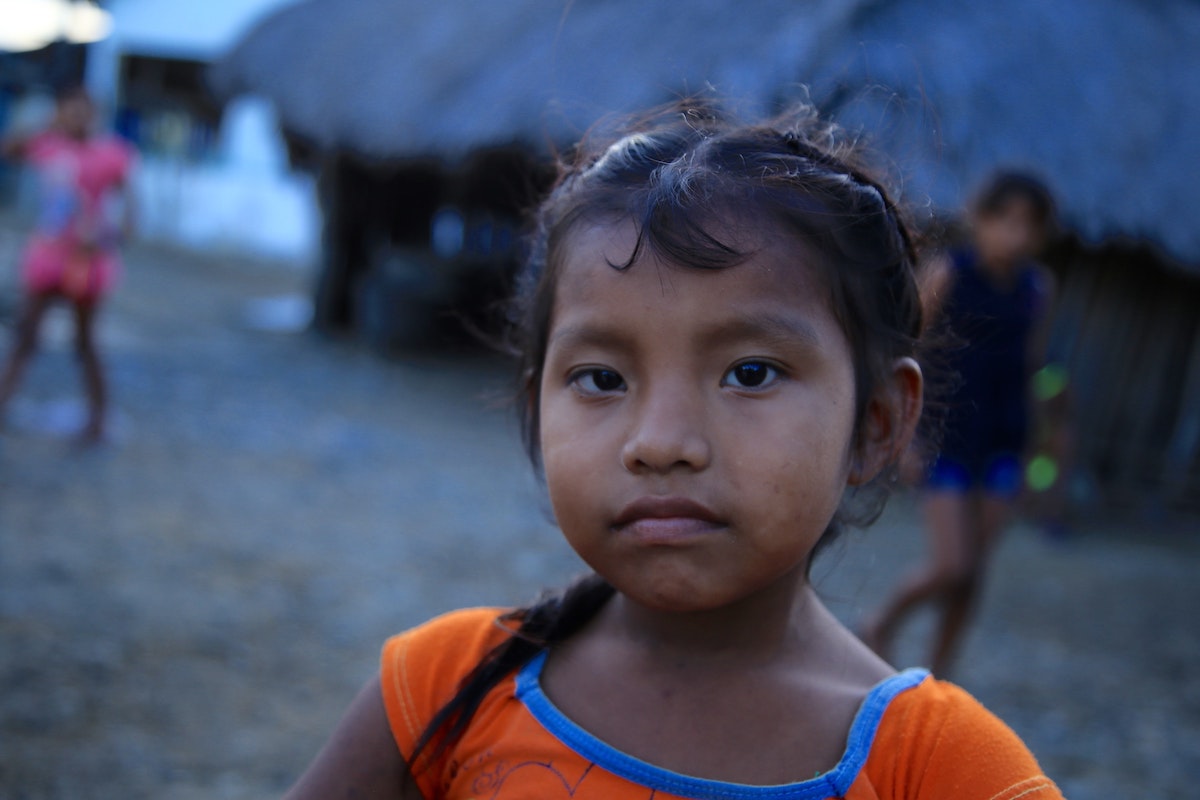
The indigenous people of the San Blas Islands, (Guna Yala), are known as the Guna people/Kuna people interchangeably, it was recently changed to Guna by the Panamanian government with good intentions. Once prevalent across Panama, Colombia and much of northern South America, populations of Guna people were subdued by Spanish colonists over hundreds of years.
Creating the autonomous region of San Blas, the Guna people have been able to hang onto much of their own individual culture and way of life. The economy of the Guna relies mainly on agriculture, fishing, tightly-controlled tourism and the manufacturing of clothing.
Clothing is a defining part of the Guna culture and takes the form of unique patterned cloth known as Mola. Mimicking patterns the Guna once painted onto their clothless bodies, these clothes were a way of keeping their indigenous heritage without clashing with Spanish Christian missionaries.
While many of the Guna people now speak Spanish, everyday family interactions are done so in a language known as Dulegaya. This is an aboriginal American language, and although it is spoken widely by the Guna, it is considered an endangered language.
Apart from the culture, language and clothing, the Guna people differ from the Spanish-speaking Panamanians in their choice of cuisine. Relying heavily on the waters that surround the San Blas Islands, naturally, the Guna people eat a range of seafood. The culture-defining dish is one made up of red snapper fish and coconut-flavoured rice – a true San Blas Island delicacy.
Things To Know Before Visiting The San Blas Islands, Panama
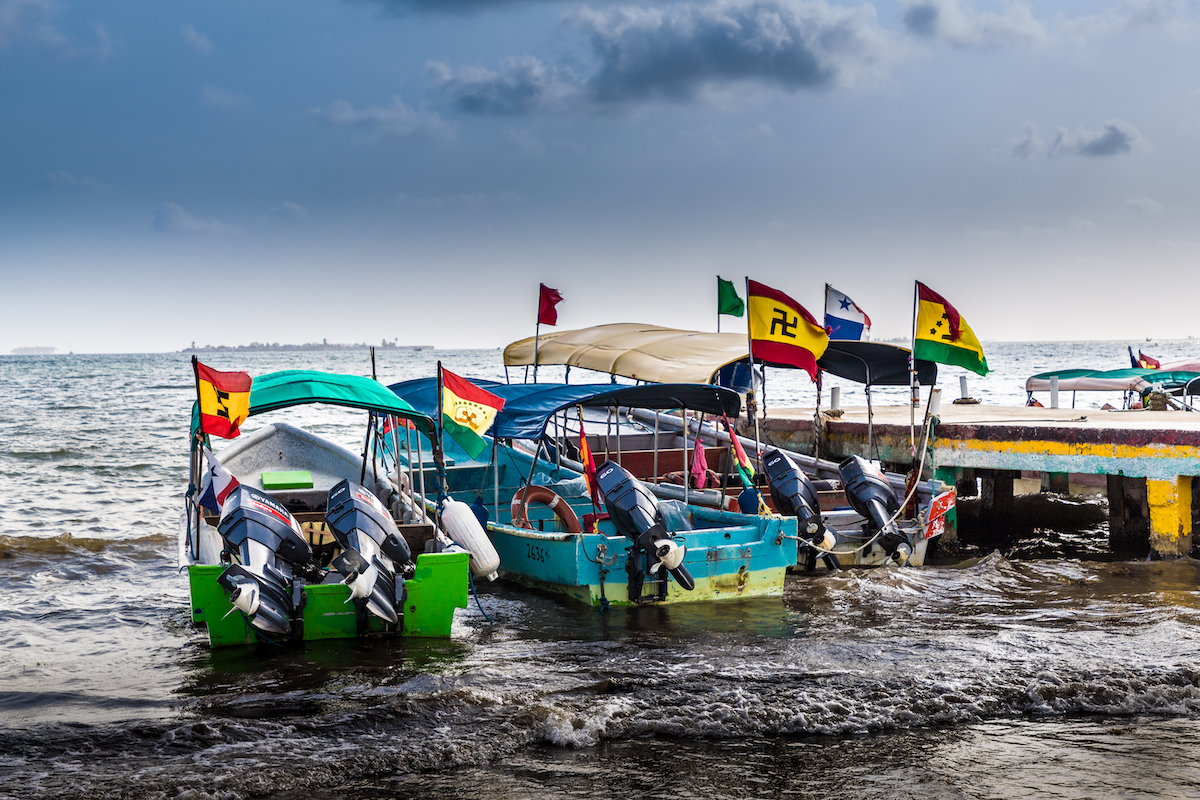
I got myself into a bit of a frenzy when I last-minute planned to visit the San Blas Islands, but thankfully it’s not that complicated at all. Take heed to the following tips and you’ll be loving life over there.
- Bring your passport: Remember that San Blas Islands is technically a non-official country, so you need to arrive at the Guna border with the very passport that you were stamped into Panama when you arrived. You will receive a new stamp, just treat the process like any other border crossing between two countries (albeit a relatively more chilled one).
- There are no ATMs on the island. Bring wads of cash, the currency is still the Panamanian balboa (PAB), as always it’s a good idea to bring US Dollars too.
- It’s a $22 USD fee to enter. So bear that in mind when counting out your wad of cash for however long you are staying on San Blas.
- Electricity is sparse. You might luck out with a few places that have a generator, but even those don’t have electricity 24/7. It’s best to not expect it all and anything else is a bonus. Charge up your gear beforehand if you really need electricity and bring chargers.
- It’s beautiful, but not luxurious. And the two don’t always intertwine. The islands are objectively gorgeous, but the accommodations and amenities are very basic. This is not like planning a trip to The Maldives. You will often have no running water and the beds aren’t comfy like you’d find in luxury resorts. I had no air conditioning, it is better to accept this beforehand so you can manage your expectations and enjoy the place for what it is.
- Keep your hands off the coconuts! Don’t worry, you can enjoy a purchased coconut, just don’t do it Robinson Crusoe style if one drops from a tree. Coconuts are used as currency by the Kuna-Yala people and if one lands on the sand, just admire it and leave it for a local.
- Not a lot of food options. Veggies and vegans are in for a nightmare, but you can always take your own food beforehand if that’s the case. Gluten-intolerant people should be fine and you’re absolutely fu***d if you don’t like seafood as that’s what the whole place lives on.
- The locals have their own language. As previously mentioned, it is called Dulegaya unless you missed this information above. But they widely understand Spanish, and you can get about just fine with English if you (like myself) have a strong accent, but slow down and consciously annunciate for non-native English speakers.
- Mobile data is sketchy. I went completely off the grid, so I didn’t care about that. But my humble brag aside, I realistically know that those who work online sometimes need to check in now and then so it’s important that you manage your expectations here.
- No, it’s not a Nazi flag! The national flag of Kuna Yala does indeed have a swastica-based design and you will see it everywhere. Much like ancient Eastern philosophies, the symbol has been a large part of Kuna culture since 1925, it has recently been modified slightly so that people do not wrongly assume a pro-Nazi stance. It’s bad for business.
- Save San Blas unit last. Travel around Panama first and then finish up at San Blas, if possible. It is very much a relaxed vibe, so do all of the running about first and treat yourself to recharging your batteries on the islands.
How To Get To San Blas Islands
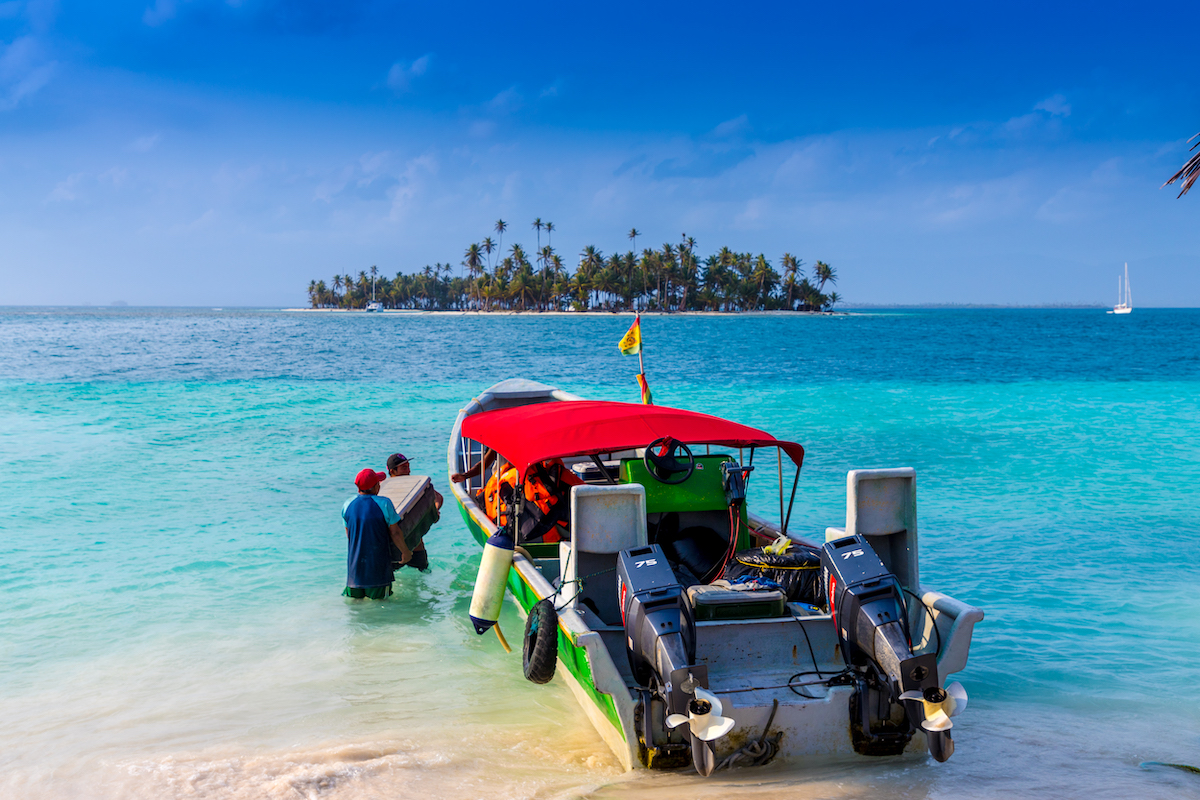
Being a remote island chain on the opposite side of the country, travelling from Panama City to the San Blas Islands isn’t always a straightforward journey, it’s also nowhere near as stressful as it seemed to be when reading some San Blas Islands guides.
Choosing your mode of travel getting to the San Blas Islands will all depend on your budget and time frame; let’s take a look at the most popular routes and methods.
Join an organised trip from the city
One of the most popular ways of getting to the San Blas Islands is to join one of the many organised trips that start from Panama City via tour agencies or your accommodation in Panama City.
You can self-drive if you have rented a 4×4, but the paperwork needed doesn’t seem worth the hassle to be honest.
The journey is divided into two stages; the first half is travelling overland, and the second is travelling over water via water taxi.
Leaving Panama City in the early morning (usually, around 5 am) you’ll be driven northwards in a 4×4 – the journey from the city to the coastal port town of Puerto de Carti will take around two and a half hours. Winding through the jungle roads, some of which are unpaved, the journey is bumpy and full of views of the Panamanian jungle.
If you do suffer from car sickness, be prepared with tablets. When you reach Carti, you’ll join a water taxi which will take you to your chosen island.
A journey of this type is likely to set you back around $80- $100, this includes the occasional island entry fee enforced by the local Guna people.
Take a flight from Panama City, straight to the islands
For those who are short on time and don’t fancy the long journey across land and sea, it is possible to take a flight directly from Panama City to the capital of the San Blas Islands, El Porvenir.
These flights are only serviced by Air Panama, carrying only 20 passengers at a time, so it’s important to book well in advance. Prices for these flights can vary depending on the time of year, the number of passengers and many other factors. Budgeting around $100-200 for the one-way flight will ensure you won’t have any nasty surprises.
The flight from Panama City takes around an hour and lands in San Blas’s capital El Porvenir. Now known by its indigenous name, “Gaigirgordub,” the island is home to a (very short) runway, governmental offices and a museum or two. From El Porvenir/Gaigirgordub you can take water taxis to the other hundreds of islands that make up the San Blas archipelago.
Again, this one does not seem worth the time or extra energy and you’ll still need to get an extra water taxi for your final destination. One of those weird ones where you meet inconvenience by trying to make your trip more convenient!
Charter your own boat from Panama to Colombia
If you really want to splash out on a jam-packed experience, it’s not uncommon to charter your own sailing boat and captain from Panama through the San Blas Islands all the way to the Colombian city of Cartagena.
This sea route is extremely common for tourists visiting the two countries, as the alternative land crossing through the Darién gap is famously hazardous.
Starting from the port city of Colón, famous for being the entrance to the Panama Canal, your journey will take around four to five days, stopping off at the San Blas Islands of your choice. The luxury cost of this journey will be around $500-$700 (including a border tax of $100). Sharing this with a few fellow travellers will greatly reduce the price for each of you.
Also: Best Things To Do in Santa Marta, Colombia
Best Time of Year To Visit San Blas Islands
The climate around the San Blas Islands is divided into two separate seasons, the wet and the dry. The dry season starts at the beginning of the year, lasting from January right up until May. The wet rainy season begins in June and continues until December at the end of the year, which has raised local concerns about the rising sea level.
I’d say that there’s no real ‘best time’ to visit the San Blas Islands, as each season offers its own allure, and it all depends on what you want to get out of it.
You might think that the dry season would be the ideal time to travel to San Blas, but this isn’t necessarily the case. Although it is named the rainy season, being so far out from the coast, the islands are not prone to torrential rain, but rather an hour’s quick downpour. Apart from the odd shower and light breezes, the rainy season isn’t as unappealing as you might think.
The dry season promises almost no rain throughout the months, which is, of course, a huge bonus. However, the dry season is also the time the ‘trade winds’ appear. This is fantastic for sailing but not so much for clear water snorkelling.
Are There Any Particular Things To Do in San Blas Islands?

Most of the things available to do in the San Blas Islands could come under the umbrella of ‘island-hopping,’ because, well, it’s an archipelago of 367 isolated islands to check out.
Typically, you will have a home base island that you return to after half-day tours of other islands and here are 10 things that I recommend for your oh-so-stressful trip to the blissful San Blas Islands.
1. Kite Surfing
Panama, as a whole, has a fantastic surfing reputation, but seeing that the San Blas islands don’t have any large and wild waves your best option is kite surfing, which I tried for the first time on the aptly tropical-sounding name “Coconut Island” and basically face-planted the sea for an hour or two.
If you want to do this then you should organise it beforehand with a tour company as they could be fully booked if you try last-minute.
2. Snorkelling
With a fierce approach to sustainability and preservation of the waters, scuba diving is strictly not permitted by the Guna people. But with crystal clear shallow waters and lesser-trampled coral reefs, there are certainly worse places to “just” snorkel than the San Blas islands.
Using simple snorkelling gear, you can explore a plethora of marine life and coral reefs that can be found all over the archipelago. A fantastic place to catch marine life in all its glory is the shipwreck just off the coast of Isla Perro, or the English version of Dog Island as it’s often called, which is roughly an additional $3usd to enter.
I recommend Viator snoorkelling tours as you get to visit 3 different spots in one day.
3. Sailing
With strong trade winds during the dry season, the San Blas islands turn into a sailing paradise. You can quite easily pay for a local sailing trip around the islands and if you’re qualified, take up the task yourself although I’m unaware of the protocol for that. These sailing trips can also be interspersed with snorkelling, swimming and meeting the locals for an all-around package deal.
5. Truly island-hop
It’s easy to organise a tour of the whole archipelago or a few select San Blas islands and move on to your next place to lay your sunburned head. You can either set out from the mainland or even from one of the major San Blas Islands, such as Kikirdub.
These will allow you to see as many of the islands as possible without being stuck in one place. This was not my style as it would have seemed awfully paradoxical to rush and move around like that, but that’s completely your call of course.
6. Enjoy The Stars
In an area of the world that has zero light pollution, seeing the unblemished cosmos canopy above you is easy.
Simply lay back in your beach hammock and enjoy the endless constellations above you, a sight you may not be used to. If you come from a light-polluted city that hides the stars, this is one of those free things to do around the world that I never fail to be amazed by, same goes for beautiful sunrises and sunsets.
7. Become a Full-Time Beach Bum
A few months before my visit to the San Blas Islands I really thought I did a good job of being a beach bum while visiting Caye Caulker in Belize, but going off-piste here brings relaxation to a whole new level.
Some of you may think, “How hard can it really be to relax?” Well, you couldn’t pick a more perfect place to do this than the San Blas Islands. With less modern distractions and the gentle lap of the waves, the islands are the perfect place to get lost in a book or simply do nothing, be nothing other than just being.
8. Work Out
Have you developed a couple of love handles after enjoying all those culinary Caribbean delights, or one too many sleepless nights during your decadent week in Cuba? I’m not judging. I know more than most people that there are more than enough fun temptations in this part of the world.
But if you have more time on your hands for a workout; why not let nature be your gym? Your base island for the night is the ideal place for a run, swim or even a few circuit exercises. No gym in the world can beat the stunning scenery that surrounds you and your beach push-ups.
9. Get To Know The Kuna People
It’s not every day that you get to interact with a truly indigenous group of people (and if that sounds like your kind of thing, feel free to read about my experience staying with a tribe in Papua New Guinea). After all, this is their own country and where better to learn about the Kuna culture than on their own turf?
Whether it’s cooking alongside them, trying out a few polite Kuna phrases, or breaking the ice by buying a few items of Mola clothing or their unique art, there are lots you can do to bridge the cultural gaps.
10. Visit Pelicano Island
Are you a fan of the Netflix series ‘Money Heist?’ Well, Pelicano, known to the Kuna folk as Isla Gorgidub hosted an episode here on season three. If you’re a fan of the show, then it’s worth making the 40-minute boat ride from the port to check out this place with your own eyes, get in early as tours to Pelicano Island are booked far in advance.
Where To Stay in San Blas Islands
As the San Blas Islands are committed to low-impact ecotourism, you won’t find any high-rise hotel chains here. You will, however, find comfortable accommodation for all kinds of budgets.
Those looking for cheap accommodation can choose something simple such as a tent or a beach hut. This won’t cut into the budget too much, and you’ll get a truly immersive experience.
Spending a few more dollars, you can always book an Airbnb or on Booking.com, with stays ranging from a cabin on a boat to a simple wooden hut overlooking the water. By keeping resorts off the island, ecotourism and low-impact approaches will sustain the island far better and will keep it at its best for generations to come.
Airbnb is also popular there, but you might struggle if you don’t speak Spanish. Still, it’s always good to have options!
- Compare San Blas Accommodation options at Booking.com
- Check Agoda For San Blas islands Accommodation
How Long Should You Stay?
As someone who was looking to go completely off-grid in terms of the digital world, while finding the balance between learning about the San Blas Islands without rushing too much and not staying forever and turning into some sort of weirdo recluse with smelly dreadlocks; 5 days was the sweet spot for me.
Many visitors to San Blas take a simple day trip and return at the end. I can understand why many would choose this, I believe they’re simply losing out.
A day trip includes hours of travelling, leaving very little time to enjoy the islands. The slow island pace is what truly makes the San Blas Islands, and with a rushed day trip, you simply won’t experience that. That being said, everyone is running off different constraints so a day trip from Panama to San Blas Islands makes sense if you’re short on time.
Final Thoughts Of The San Blas Islands Travel Guide
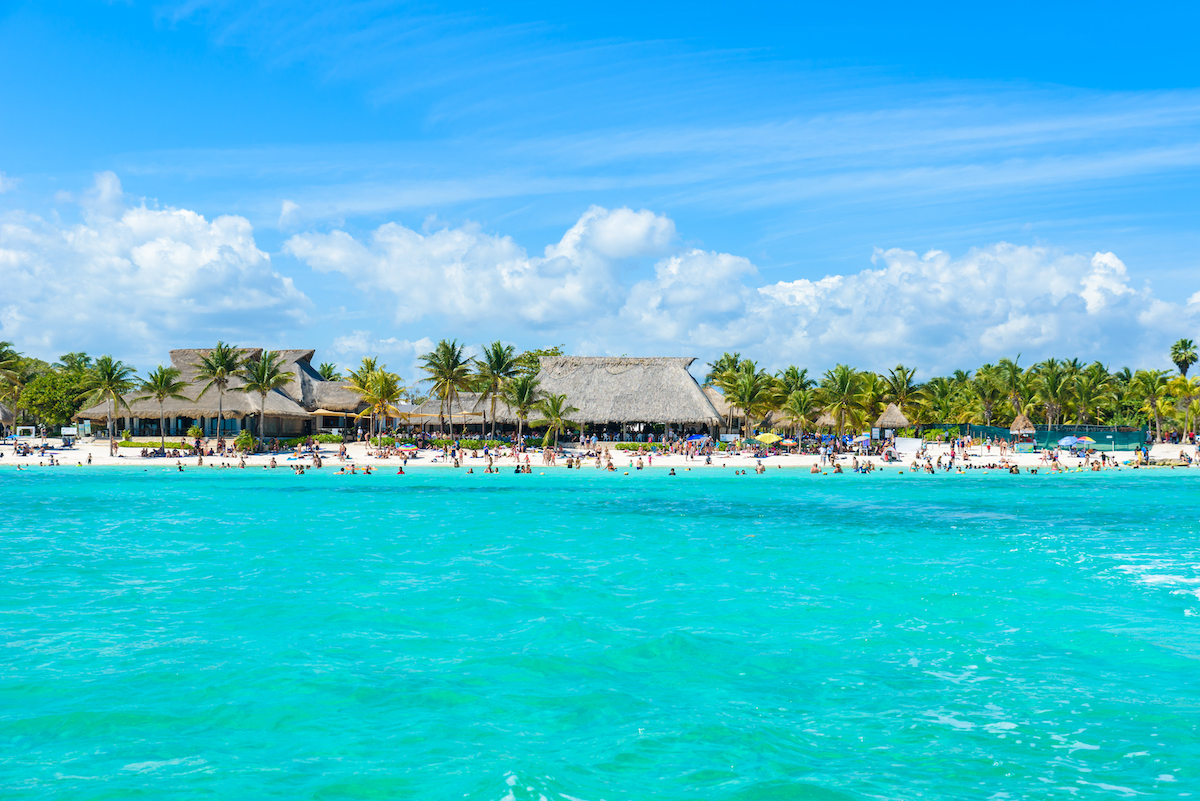
At face value, you could certainly be forgiven for raising a sceptical eye to the claims behind the “uniqueness” of San Blas Islands, Panama amongst many others of its Central American and Caribbean neighbours has tropical beaches and delightful waters at dime a dozen.
I have observed in the travel blogging world that many authors are often a little too excitable and if you keep making the claims that every destination is “like no other,” then every destination surely starts to become like one another!
The islands are a thumbs up from me, as the true singularity behind the beauty of this place is how it is run and the fact that the Guna-Yala people have fiercely held onto their cultural identity while making some cash to put the coconuts on the table for their families.
That with the added advantage of being deliberately incommunicado for a few days is why I put together this San Blas Islands travel guide for anyone else who is looking for exactly the same thing that I was.

